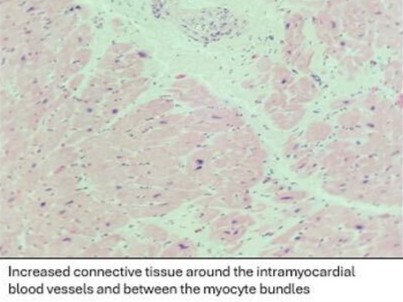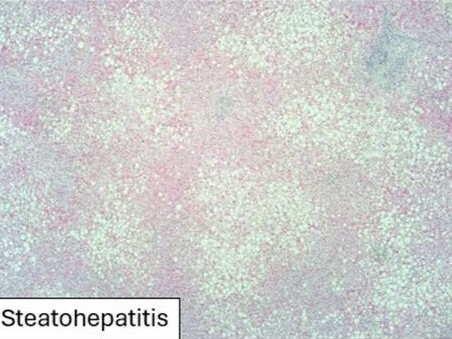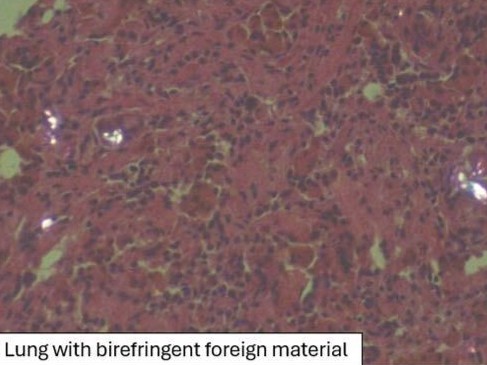Case History:
40 year old male found unresponsive. No medical or social history. The scene was unremarkable. External examination revealed scars on the forearms and legs. Autopsy revealed 450 g heart, edematous lungs, and firm liver.



Based on the histologic findings, what is the most likely cause of death?
A. Hypertensive heart disease
B. Undetermined causes
C. Methamphetamine toxicity
D. Sepsis
Correct Answer: C. Methamphetamine toxicity
Discussion:
Stimulant use (e.g. methamphetamine, cocaine) is associated with multiple cardiovascular and systemic complications.
- Heart: Stimulant use (meth/cocaine) = cardiotoxicity. Myocardial fibrosis, cardiomegaly, contraction band necrosis, infarction. These changes can mimic hypertensive heart disease but point toward stimulant toxicity.
- Lung: Birefringent material can be seen when drugs are injected or snorted. Black carbon-pigmented intraalveolar macrophages are classically seen in crack cocaine smoking (vs. brown pigment from tobacco/cannabis).
- Liver: Steatohepatitis is common in IV drug use, not just alcohol.
Route of administration leaves clues:
- Injection = birefringent particles in lungs, steatohepatitis
- Smoking = black carbon macrophages
- Snorting = nasal perforation, birefringent particles in lungs
- Oral = often no histologic findings
Toxicology confirmed methamphetamine.
Histology provides clues to the route of drug use, but correlation with autopsy + tox is essential. Chronic changes may be misleading, always integrate the whole picture!
Case contributed by: Sarah Anderson, D.O., Assistant Professor, Forensics